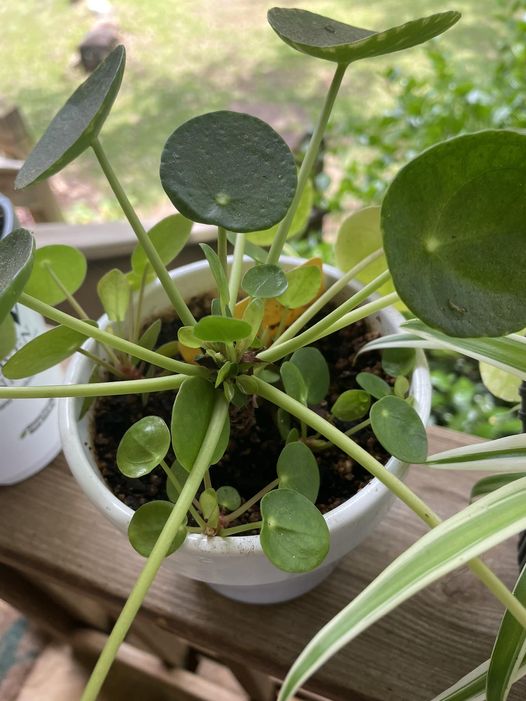
The Chinese Money Plant, or Pilea peperomioides, is a popular choice among plant enthusiasts for its unique, coin-shaped leaves and easy-going nature. Native to the subtropical regions of China, this plant is accustomed to a warm, humid climate, which makes winter care a bit of a challenge for those living in colder climates. As the temperature drops and daylight hours shorten, you may find yourself wondering how to keep your Chinese Money Plant thriving through the winter months. In this guide, we’ll delve into the specifics of winter care for your beloved plant, ensuring it remains healthy and vibrant despite the season’s challenges.
Understanding Your Chinese Money Plant
What Makes the Chinese Money Plant Special?
The Chinese Money Plant is celebrated for its attractive, round leaves that resemble coins—hence the name. It’s a hardy plant that’s relatively easy to care for, but winter can pose some unique challenges. Understanding its natural habitat and growth patterns will help you provide the best care possible.
- Origin: Native to the subtropical regions of China
- Appearance: Round, glossy leaves on slender stems
- Growth Habit: Grows in a rosette formation, producing offsets or “babies” that can be propagated
Why Winter Care Matters
Winter brings colder temperatures, reduced sunlight, and often, drier indoor air—all of which can stress your plant. Proper winter care ensures that your Chinese Money Plant remains healthy, vibrant, and continues to grow.
Essential Winter Care Tips for Chinese Money Plants
1. Adjusting Light Conditions
Why Light is Crucial
During winter, daylight hours decrease, which can affect your plant’s growth. Chinese Money Plants thrive in bright, indirect light, but they can adapt to lower light levels if needed.
- Location: Place your plant near a south-facing window for the best light. If direct sunlight is too harsh, use sheer curtains to diffuse it.
- Artificial Light: Consider supplementing with grow lights if natural light is insufficient. LED or fluorescent grow lights can mimic natural sunlight.
Signs of Light Stress
- Leggy Growth: Long, spaced-out stems
- Pale Leaves: Loss of color in the foliage
2. Managing Temperature and Drafts
Ideal Temperature Range
Chinese Money Plants prefer temperatures between 65-75°F (18-24°C). Winter temperatures can drop, so it’s important to keep your plant within its comfort zone.
- Avoid Cold Drafts: Keep your plant away from windows, doors, or heating vents that can cause temperature fluctuations.
- Consistent Temperature: Maintain a stable temperature, avoiding sudden drops.
Signs of Temperature Stress
- Dropping Leaves: Leaves falling off the plant
- Brown Edges: Crispy or browning leaf edges
3. Adjusting Watering Practices
How Winter Affects Watering Needs
In winter, the plant’s growth slows down, and it requires less water. Overwatering can lead to root rot, especially in cooler temperatures.
- Watering Frequency: Allow the top inch of soil to dry out before watering. Generally, watering every 2-3 weeks should suffice.
- Water Quality: Use room temperature water and ensure it’s free from chlorine and other chemicals.
Signs of Over or Under-Watering
- Yellow Leaves: Indicating overwatering
- Wilting Leaves: Suggesting underwatering
4. Humidity and Air Circulation
Why Humidity Matters
Indoor heating systems can dry out the air, which is detrimental to your Chinese Money Plant, as it prefers higher humidity levels.
- Increase Humidity: Use a humidifier to maintain humidity levels between 40-50%. Alternatively, place a tray of water near the plant.
- Regular Misting: Light misting can help, but avoid overdoing it to prevent fungal issues.
Signs of Low Humidity
- Dry Leaf Edges: Crisp or brown leaf edges
- Leaf Drop: Premature leaf shedding
5. Fertilizing in Winter
Adjusting Fertilizer Use
In winter, the plant’s growth slows down, and it needs fewer nutrients. Over-fertilizing can harm your plant.
- Frequency: Reduce or skip fertilizing during the winter months. Resume feeding in the spring when growth picks up.
- Type of Fertilizer: Use a balanced, water-soluble fertilizer during the active growing season, but avoid applying in winter.
Signs of Over-Fertilization
- Leaf Burn: Brown, crispy leaf tips
- Salt Buildup: White crust on the soil surface
Common Issues and Troubleshooting
Pest Problems
Winter can also bring pest issues. The dry indoor environment can attract pests like spider mites and mealybugs.
- Inspection: Regularly check the undersides of leaves and stems for pests.
- Treatment: Use insecticidal soap or neem oil to treat infestations.
Disease Prevention
Cold, damp conditions can promote fungal diseases.
- Good Airflow: Ensure adequate spacing between plants and avoid overwatering to prevent fungal growth.
- Proper Watering: Avoid letting the plant sit in water.
Conclusion
Caring for your Chinese Money Plant in winter involves adjusting light conditions, managing temperature and humidity, modifying watering practices, and being vigilant about pests and diseases. By paying attention to these factors, you can ensure your plant remains healthy and continues to bring joy throughout the colder months. Remember, winter care is all about making small adjustments to create a comfortable environment for your plant. With these tips, you’ll help your Chinese Money Plant thrive until spring arrives, bringing new growth and renewed vitality.
